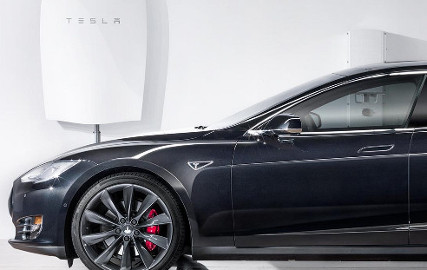With energy demand set to climb as consumers switch to EVs in the run up to the UK ban on the sale of new ICE vehicles in 2030, software developers are harnessing the power of AI to track and optimise energy consumption.
Although the shift to battery-powered EVs in the UK is accelerating – 1 in 5 cars sold in the UK in 2022 was battery powered – the increased energy demand placed on the grid has thus far been met, largely due to existing latent grid capacity. As the transition continues, however, the impact on the grid is expected to become much more significant.
According to the European Environment Agency, Europe’s total electricity consumption by EVs will increase from around 0.03% in 2014 to 9.5% in 2050. This increase is coming at a time when many businesses are investing in electrification as part of their decarbonisation strategies, and at a jurisdictional level, government concerns over energy security and the sustainability of supplies are growing.
To stand a chance of meeting the UK’s target of decarbonising the power system by 2035, several key barriers to electrification will have to be overcome and innovators are accelerating their R&D programmes in search of solutions.
Patent-filing research conducted by Withers & Rogers shows how hydrogen technologies seem set to play a role, particularly in terms of driving down the cost of energy storage and distribution. In other areas, software developers are focused on the development of neural networks capable of predicting energy demand based on usage patterns, whilst taking into account infrastructure and environmental considerations at a local level.
Connections
Currently, connection delays are a major barrier to progress in decarbonising the grid, with some green energy projects reportedly being told that they will have to wait 10 to 15 years for their applications to be considered. To help tackle this worsening problem, DeepMind has partnered with the distribution network operator (DNO), UK Power Networks, to develop AI-enabled software capable of producing digitised electricity cable maps. These digital maps will enhance visibility and enable faster connection services for customers seeking to connect to renewable energy sites or EV charging hubs.
Better tracking of usage patterns could facilitate a more decentralised, dynamic energy management system, which is capable of intelligently smoothing out peaks in demand and removing pressure from ‘hotspots’, such as urban areas where EV charging patterns might otherwise become a problem. General Electric has filed a number of patent applications relating to grid management.
For example, one European patent (EP 3435322 A1) describes an innovative system that manages distributed energy sources, such as local renewable generation systems, with a view to providing flexible reserve power in the grid.
When it comes to the impact of EV charging patterns on the power grid, a recent study published by researchers at the Massachusetts Institute of Technology (MIT) has revealed that some of the pressure could be alleviated by encouraging the strategic placement of charging stations, and systems to facilitate delayed charging too. For example, workplace charging could help take the pressure off evening peaks whilst making use of the peak power available from solar installations around midday.
Developments in the management of energy-intensive computing tasks could be applied to help tackle the problem of managing EV charging demand in the future. Patent application GB2574362A discusses how local computing processes can be dynamically tailored so that less energy is consumed. This could take place at times when grid demand is high or when energy available from renewable sources is low. Similar principles could be applied to EV charging; temporarily reducing the charging rate of vehicles at an individual level, to ride out periods of peak grid demand.
V2G
EVs could themselves provide a resource to help manage grid demand. Vehicle-to-grid (V2G) technologies promise to realise the potential of EVs as a huge, distributed energy storage asset. For example, control of the timing of both EV charging and discharging, using V2G technologies, could assist in stabilising grid demand, as described in a patent application filed by Honda – WO 2017/009978 A1. However, one barrier to the roll out of V2G technologies is the lack of standardized hardware, with different EV charging systems having significantly different technical requirements.
One potential candidate for vehicle-integrated V2G hardware is a technology described in patent application WO 2015/192133 A2 filed by the University of Maryland, which is capable of providing charging capability over a large range of traction battery voltages, and providing energy back to the grid via either a high voltage traction battery pack or a lower voltage battery pack.
It is also positive that the EV market is seeing increased cooperation between innovators on issues relating to standardisation. The recent move by GM to adopt Tesla’s North American charging plug, giving motorists access to the Tesla Superchargers, is evidence of the commercial pressure that individual manufacturers are facing to collaborate. Ultimately, regulation could also play a role in accelerating the way to standardisation of renewable energy systems in the future.
Another key area of innovation that could pave the way to more efficient energy management systems is increased use of localised energy storage. Many local and domestic electrical energy storage systems currently use lithium-ion batteries, but some systems suffer performance degradation over time.
Energy management
Other battery storage solutions under development are electrochemical energy storage devices, such as single liquid flow batteries, which can be used instead of lithium-ion batteries. For example, redox flow batteries are systems in which electroactive ingredients are dissolved in a liquid electrolyte rather than in an electrode. However, such solutions often provide relatively low-density power, requiring large tanks to generate sufficient output for a small community of homes. Important progress is being made in this area, for example through the development of mass-producible bipolar batteries.
With so much focus on the development of smarter, more sustainable energy management systems, there is a major commercial opportunity for innovators in the UK and globally. Those who come up with efficient and effective solutions to support all forms of microgeneration – including EVs – and bring them to market quickly, could become industry game changers. As the market evolves, standardisation is likely to follow, and innovators that have patented these technologies will have an opportunity to commercialise them widely through the use of licensing agreements.

 Diego Black (left), partner, and Andrew Hey (right), senior associate, are both patent attorneys in the Electronics Computing and Physics group at European intellectual property firm, Withers & Rogers.
Diego Black (left), partner, and Andrew Hey (right), senior associate, are both patent attorneys in the Electronics Computing and Physics group at European intellectual property firm, Withers & Rogers.
See also: Viewpoint: Robot patent wars – Innovators must prepare for a more litigious world
 Electronics Weekly Electronics Design & Components Tech News
Electronics Weekly Electronics Design & Components Tech News




